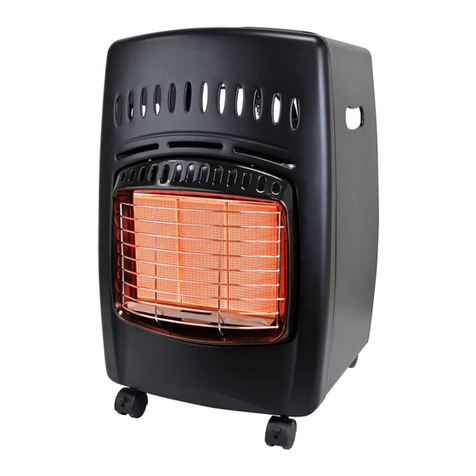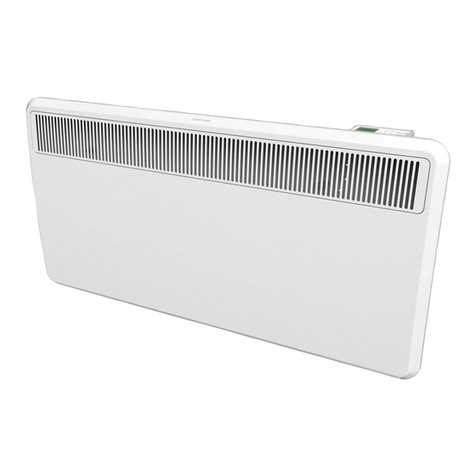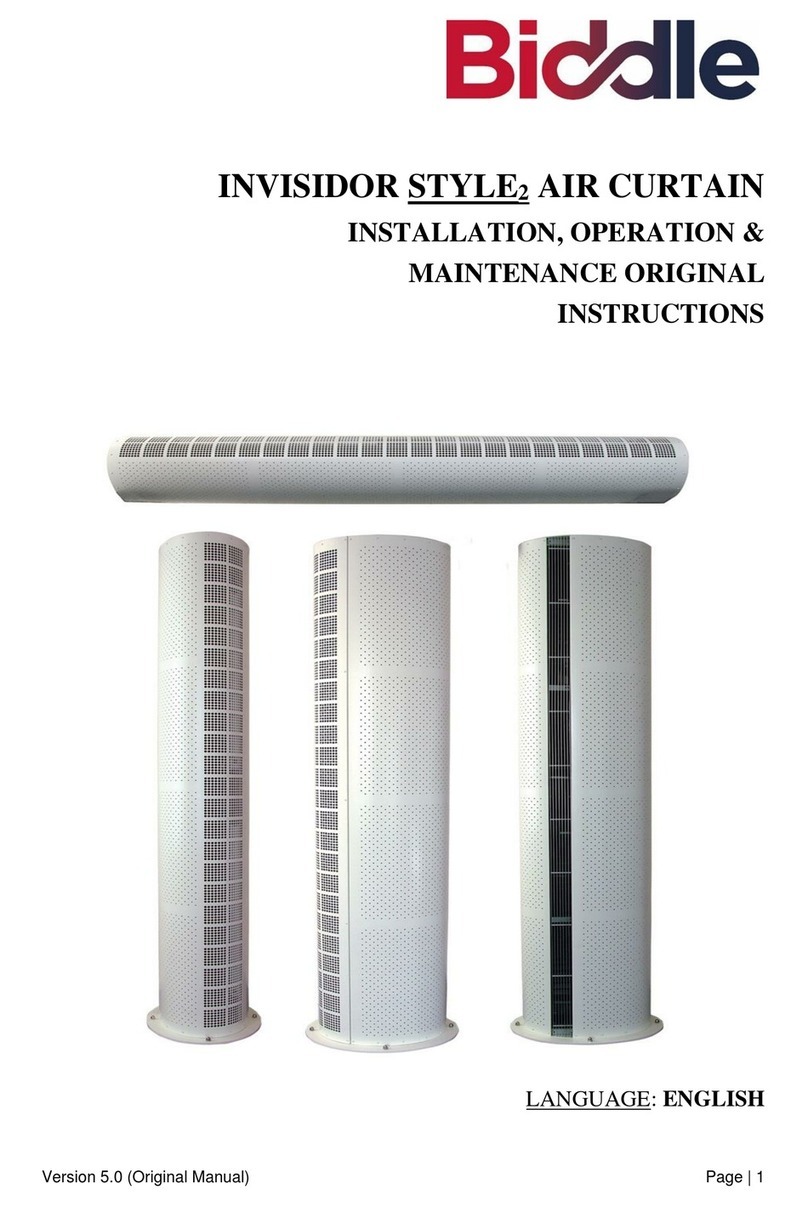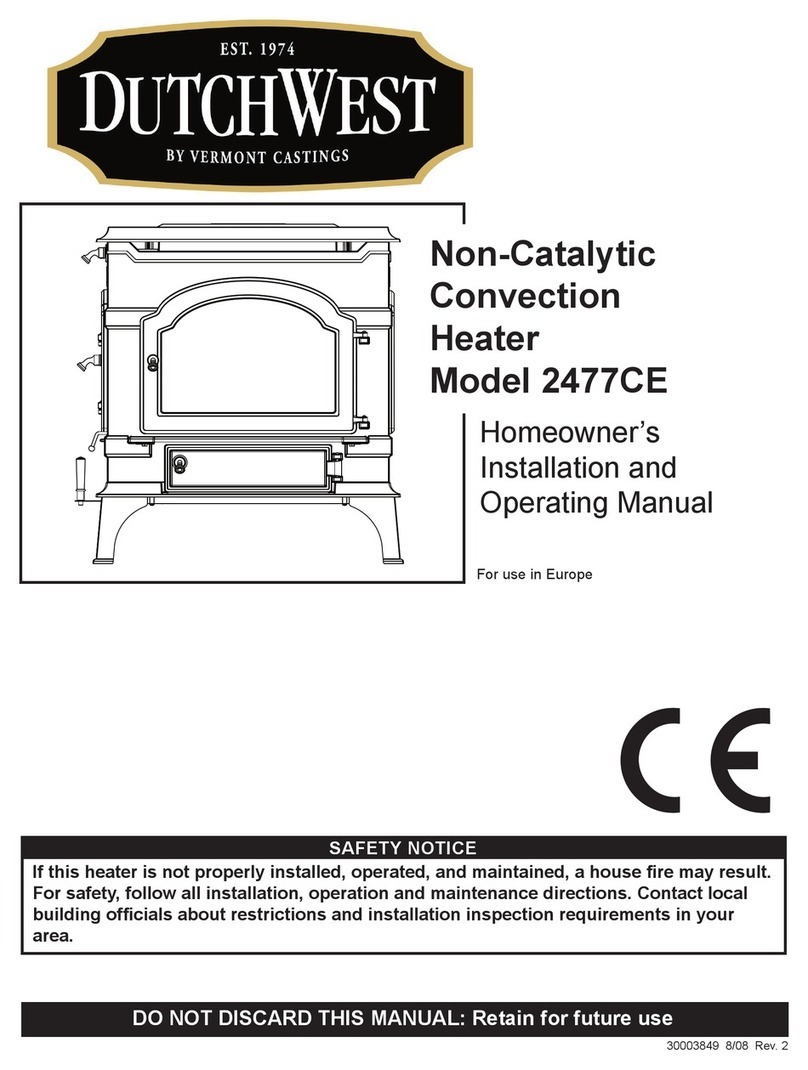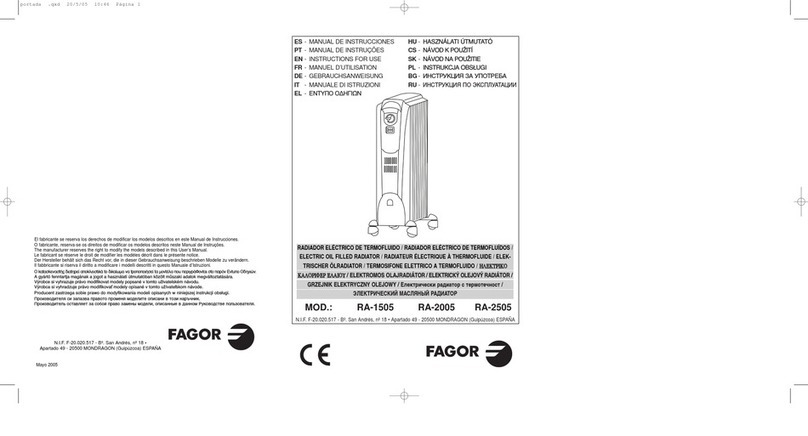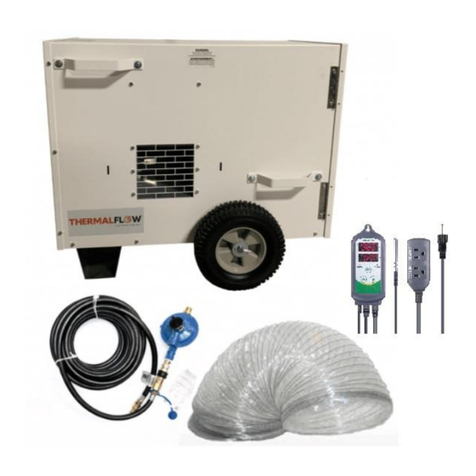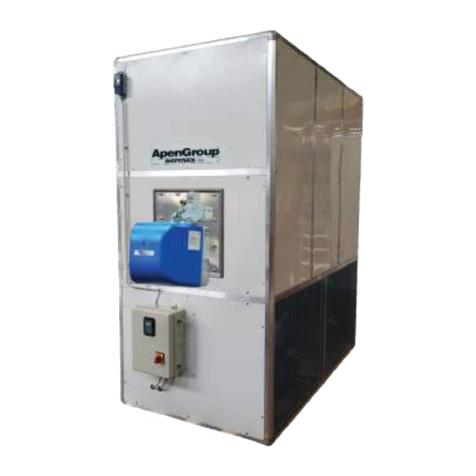
7
Air Curtains
The nomogram and procedure for air curtain design is on
page . On your request, the manufacturer will perform
complete planning of the air curtain assembly. The input
data and request form are on page 15.
Designing omogram Glossary
Type of Air Heating
It is necessary to determine the type of air heating in ac-
cordance with the installation conditions. Water heating
(W) is the most convenient type of heating. If hot water is
not available, then electric heating (E) can be used. If air
heating is undesirable, then air curtains without heating
(N) can be used; however, the efficiency of such air curtain
is limited.
Orientation and Arrangement of the Air Curtain
The air curtain orientation must be selected in accordance
with the door type. The air curtains for a section door are
always installed on the door's sides. The air curtains for a
wing door are always installed above the door. The single-
sided air curtain arrangement will mostly do for door areas
up to 10 m2. The double sided air curtain arrangement should
always be selected for door areas above 12 m2, or if large
objects (truck, palettes of goods, etc.) are required to be
situated within the door area for a longer time. Another re-
ason for using the double sided arrangement can be the
need to divide the larger ground area of the single side air
curtain into two smaller ones.
Air Flow Velocity in the Exit Slit
The air flow velocity in the exit slit depends on the required
reach range of the air curtain and the selected working
conditions. This parameter is only informative for the de-
sign procedure.
Air Flow Rate (Quantity)
First, the "minimum needed" air flow rate (point ) is deter-
mined using the designing nomogram. This air flow rate is
given by the minimum outlet air flow velocity and the exit
slit area. However, the actual air flow rate corresponding to
the air curtain fan (point ) will be significantly higher, and it
will lie on the intersection of the parabola going through
point , and the solid curve enclosing the upper side of the
respective coloured field.
ecessary Heating Output
The necessary heating output is derived from the actual
airflow rate at ∆t = 20°C. The output of electric heaters can
be 22 kW or 30 kW while controlled by the control unit.
The output of the water heater is given by the heating water
quantity (discharge); its discharge must be ensured by the
pump. This parameter is irrelevant for the low temperature
air curtain (without heating).
Water Discharge
The heating water discharge is an important parameter for
the water-heated air curtains; the heating water discharge
is constant during the air curtain operation. In most cases,
there is no need for further control of the heater output than
just switching the pump on and off. The nomogram has
been created for a temperature gradient of 90/70°C. If the
air curtain processes only circulating air and the room tem-
perature does not drop below +5°C, antifreeze protection
will not be necessary.
This parameter is irrelevant for low temperature (N) and
electric (E) air curtains.
Heating Water Pressure Loss
The heating water pressure loss for the respective water
heater and heating water discharge is included in the no-
mogram. The total pump delivery head is calculated by
adding the piping pressure loss to the heater pressure loss.
This parameter is irrelevant for low temperature (N) and
electric (E) air curtains.
ew Air Curtain Planning
Table 2 - orientation and arrangement
Table 3 - Air control
Reach Range and Length of the air curtain
The reach range is the perpendicular distance from the exit
slit where the air flow velocity is still at the minimum limit.
The reach range and the air curtain length depend on its
orientation and arrangement. The nomogram has been de-
veloped for standard working conditions.
Standard Working Conditions
nPremises with one door (separation of two indoor areas)
nConstant-pressure air handling within the premises.
nWithout ram wind
nIntermittent and momentary door opening
nBuilding without "chimney effect"
on-standard Working Conditions
nOver or under pressure within the premises
nSeveral doors (especially if they are situated
on opposite sides)
nFrequently opened door
nDoor open for longer times
These factors shift the nomogram selection curve to the
right (point).
Air Curtain Control and Regulation
VPC control units (resp. STD relays) can be used to con-
trol, regulate, supply and protect the air curtains. The type
of prescribed controller according to the used heating sys-
tem is included in the following table.
DoorMaster "P" air curtains may only be connected to prescri-
bed controller types. Other ways of protection (control) are not
allowed concerning the warranty conditions. For wiring dia-
grams of the A, B and C controllers, refer to pages 9 to 11. For
a description of controllers, see page 8.
Air heating control unit Connection
no heating (N) STD A
water (W) VCP-W B
electric (E) VCP-E C
Range Slot length
side gate width gate height
overhead gate height gate width
side 1/2 gate width gate height
overhead gate height 1/2 gate width
Arrangement
one-side
two-side

